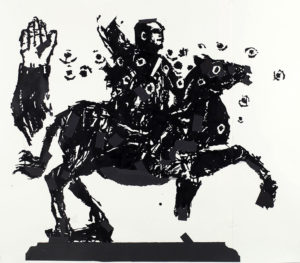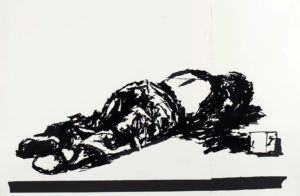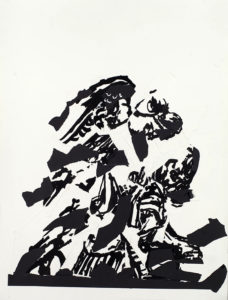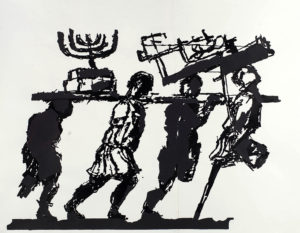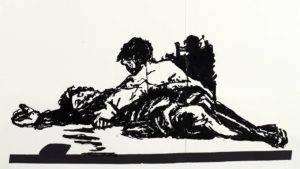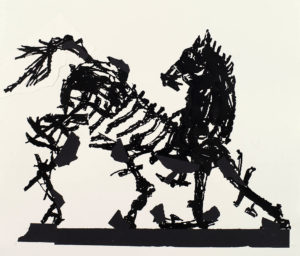The goddess of Victory, recognizable by her large feathered wings, is intently concentrated on inscribing the circular shield that she rests against her thigh, presumably with the details of Trajan’s imperial victories in Dacia (modern Romania). Her pose and the long folds of her clothing highlight her statuesque and imposing form. The figure appears twice on the Column of Trajan, marking the end of the two military campaigns, a feature repeated also on the later Column of Marcus Aurelius (c. AD 180). In this way, the act of inscribing is not simply a statement of the victory but embedded in the telling of the narrative. Kentridge similarly includes two Victory figures: one at the mid-way point of the frieze, where the figure is multiplied and seems to crumble into the banks of the Tiber (nos. 29-31); and another at the end nearest Ponte Sisto (no. 1). He has chosen, though, to let the latter entirely turn her back on the other figures and to face the bridge. Viewers are thus left to wonder whether she marks the beginning or the end of the procession, a triumph or a lament, an address or a question.























